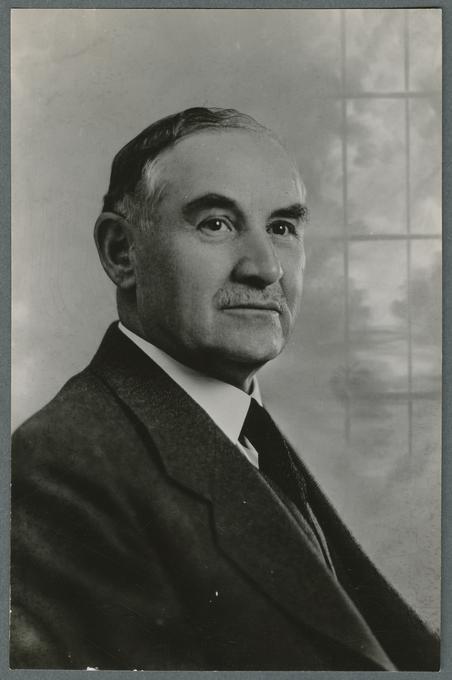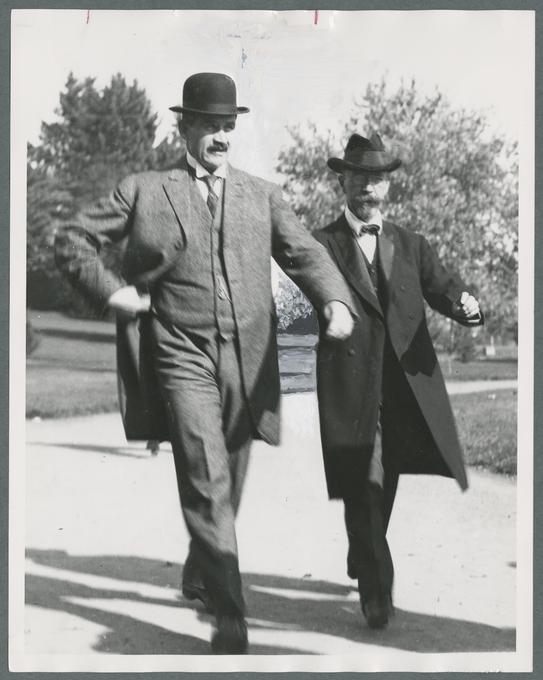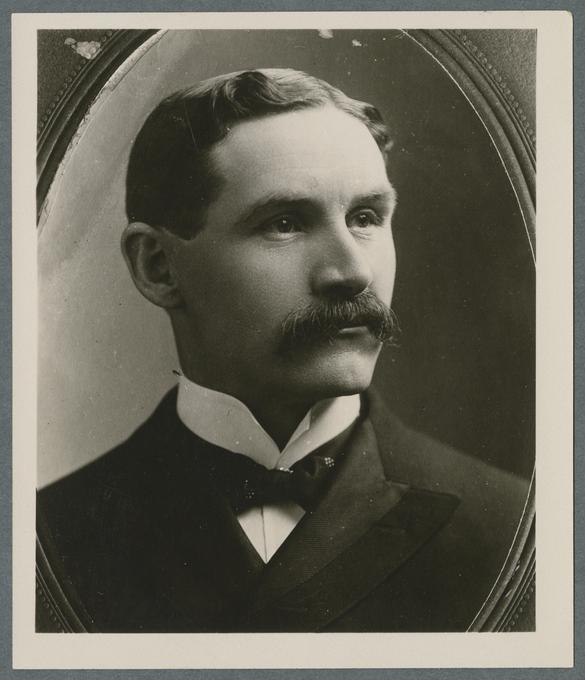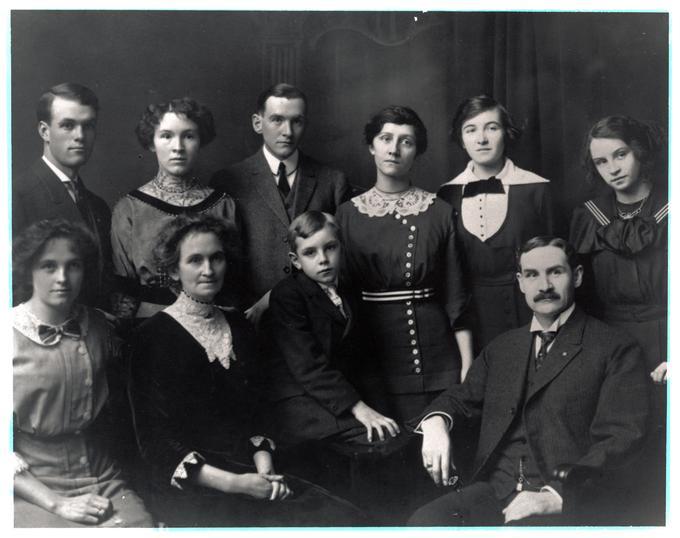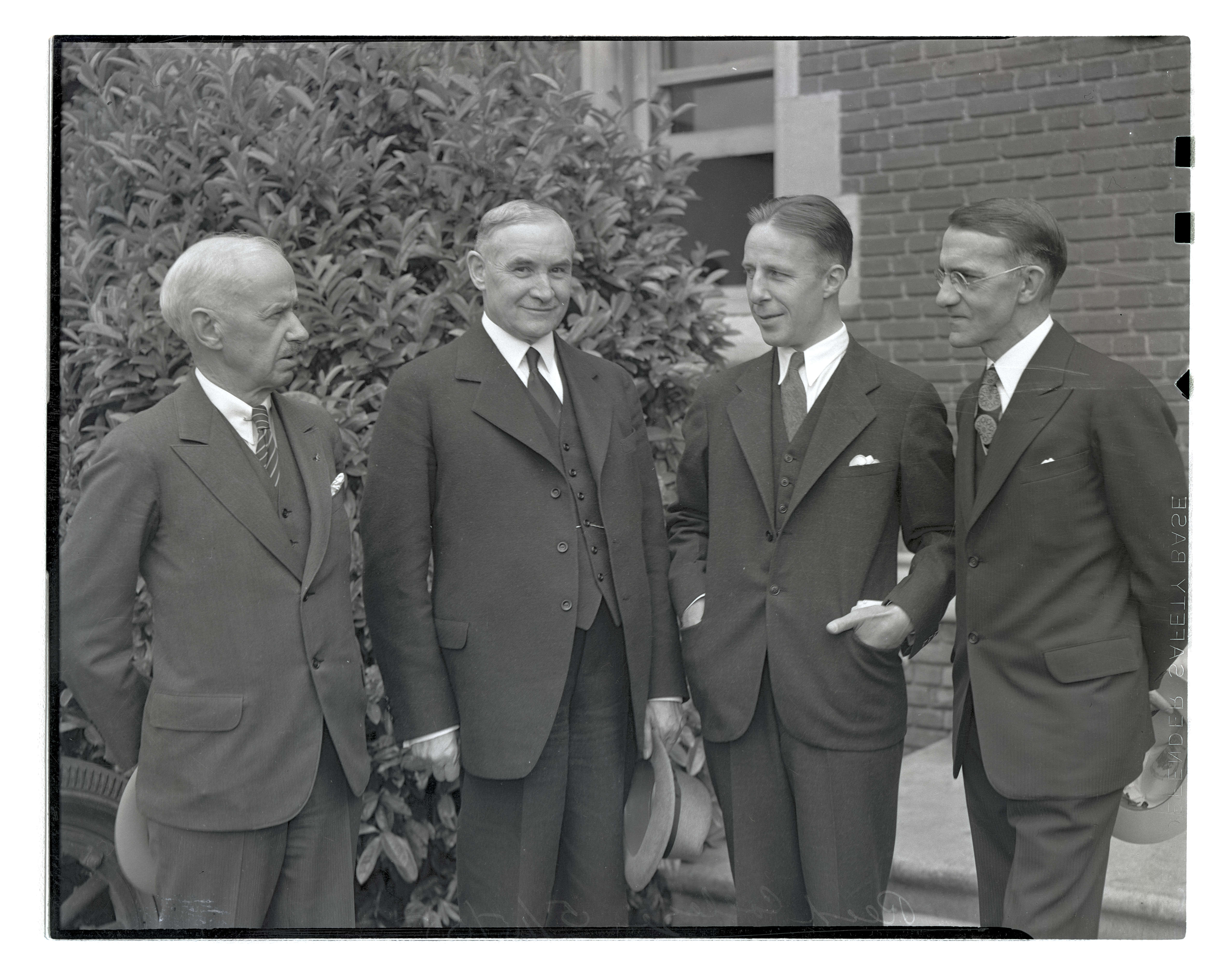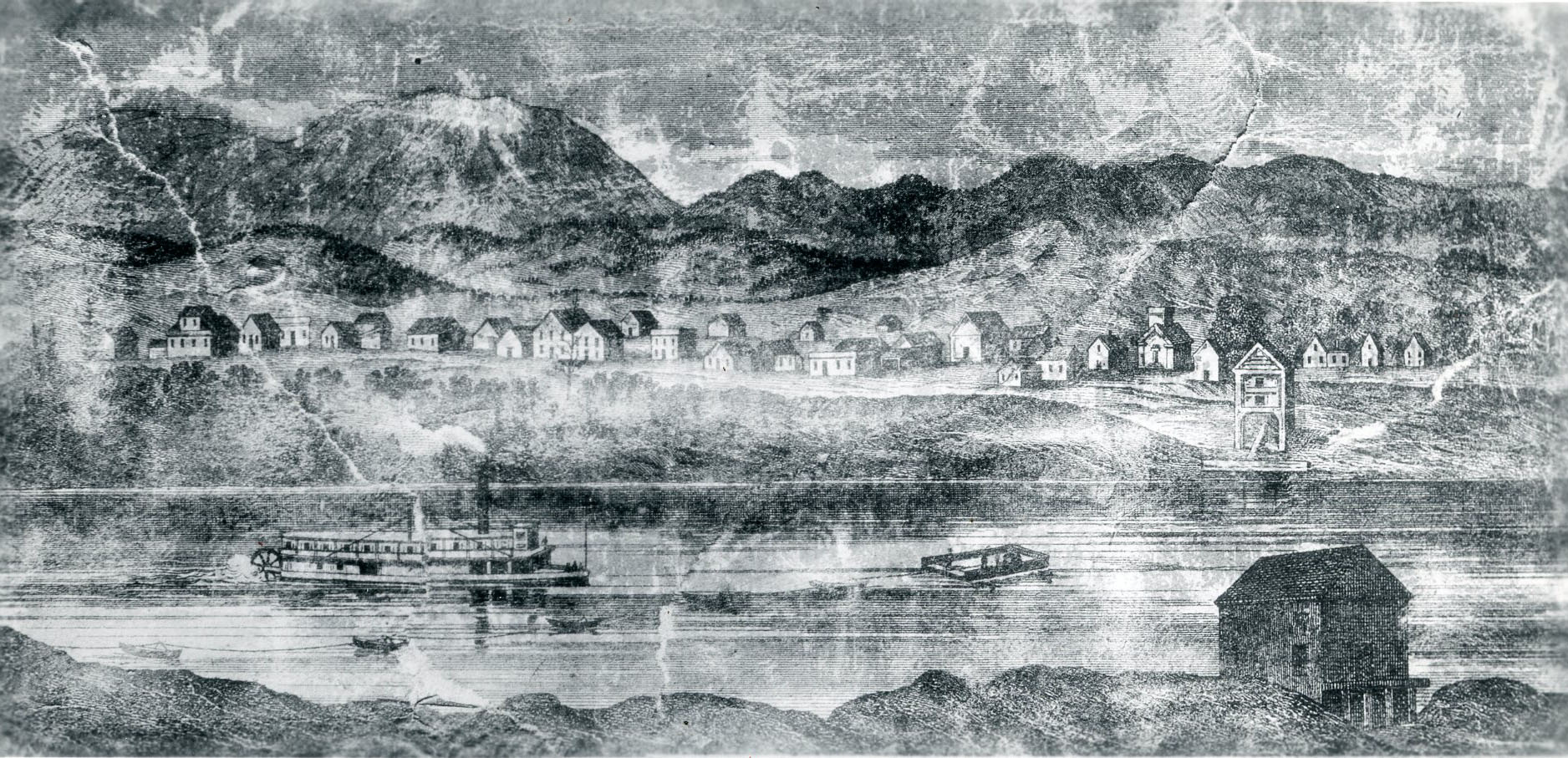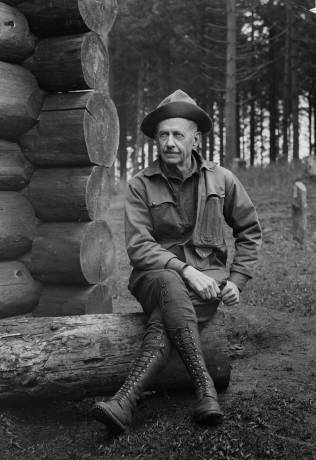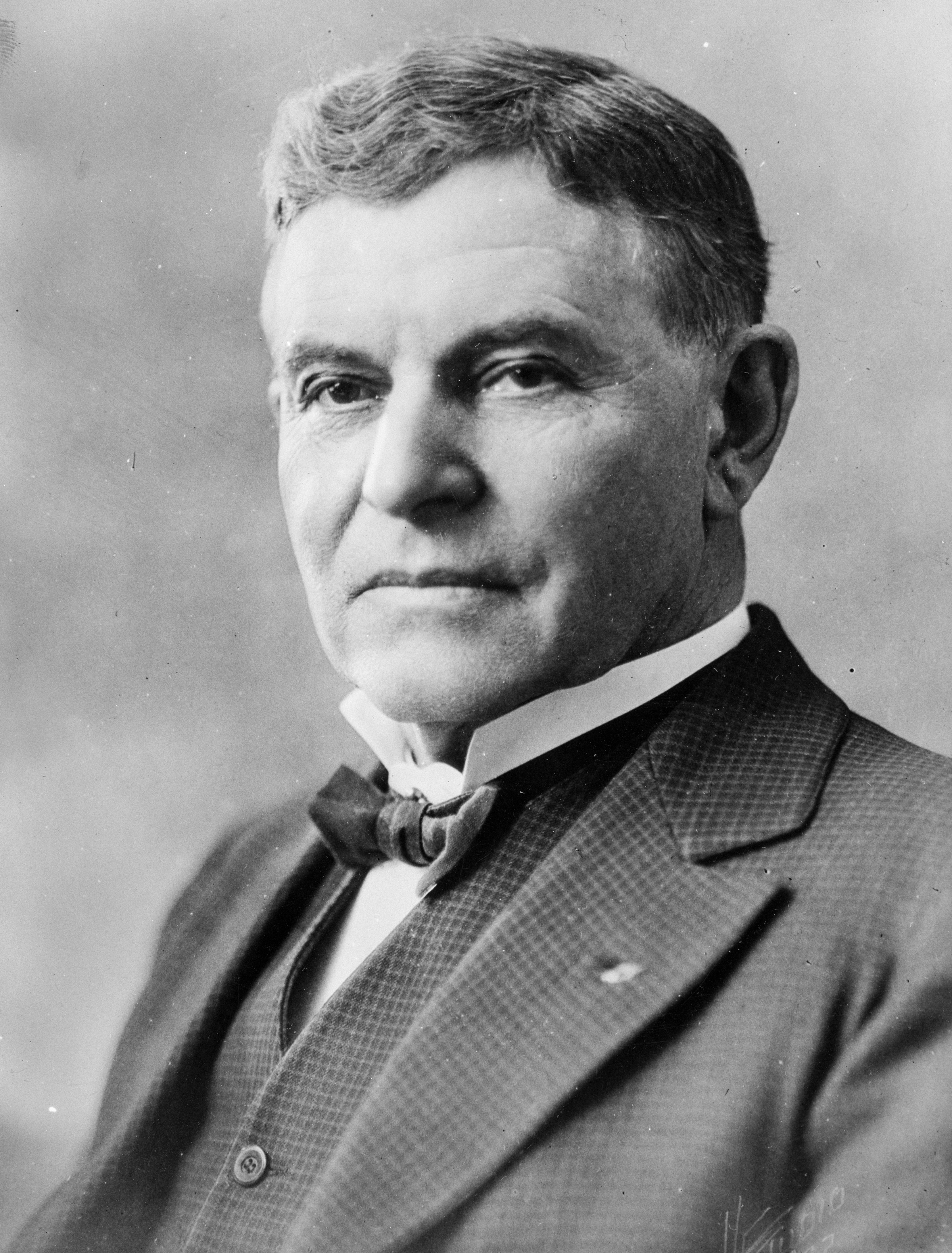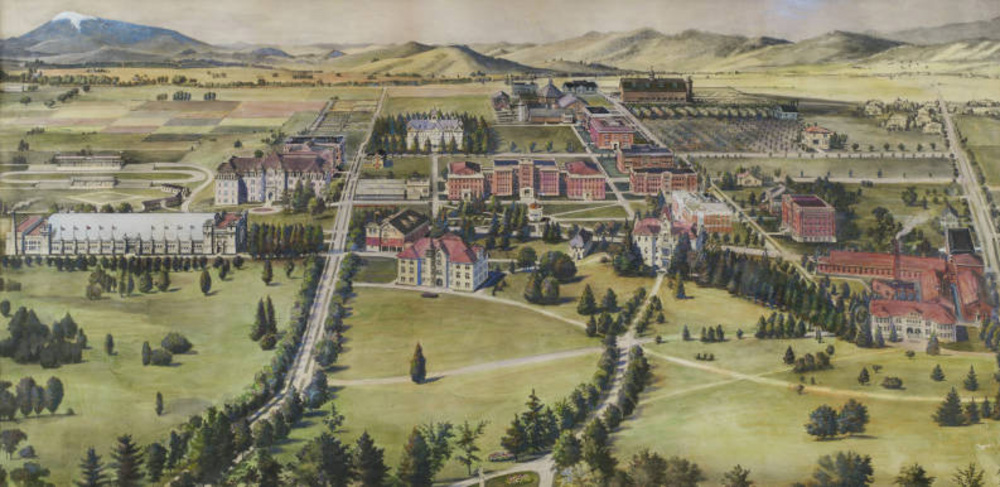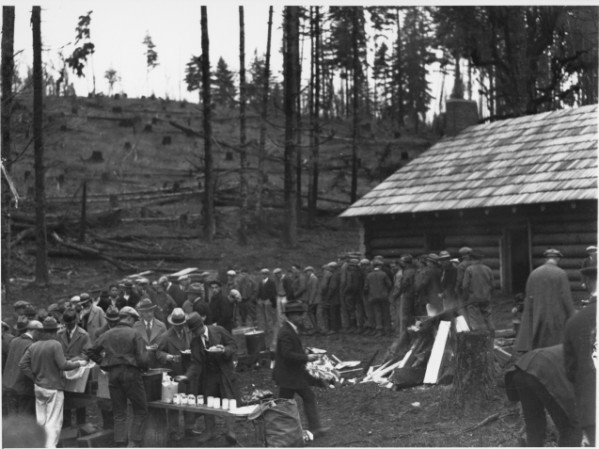When William Jasper Kerr was inaugurated president of Oregon Agricultural College (now Oregon State University) in 1907, the institution had 40 faculty members and 1,500 students. Before the full effects of the Great Depression were evident in 1930, enrollment had increased to 3,347 students, and there were more than twenty new buildings on campus. During Kerr’s twenty-five-year tenure at the land-grant college, he established an Extension Service, expanded academic programs, and commissioned John Charles Olmsted to draft plans for the campus landscape. He was the longest-serving president in Oregon State University history.
Kerr was born to Mormon parents in Richmond, Utah Territory, on November 17, 1863. He earned a bachelor’s degree in mathematics at the University of Utah in Salt Lake City. He taught at Brigham Young College in Logan, Utah, and the University of Utah before returning to Logan as the president of the college in 1894 (the college closed in 1926).
To recognize his work as an educator, the Mormon General Board of Education awarded Kerr an honorary doctorate degree in 1898. He was appointed president of the Agricultural College of Utah in Logan (today’s Utah State University) in 1900. He was named the sixth president of the Oregon Agricultural College (now Oregon State University) in 1907.
Kerr’s hiring was fraught with controversy when it was revealed that he had been a polygamist, having married Lenora Hamilton in 1885 and Lois Cordelia Morehead in the mid-1890s. Congress had denied Utah statehood until it banned polygamy, which it did in 1890. Kerr divorced his second wife in 1898 (they had two children), and he and his first wife left the church while he was president of the Agricultural College of Utah. Even though he had disavowed the church by the time he applied for the OAC presidency, the disclosure created a firestorm of criticism against the college’s Board of Regents for approving the hire. The controversy dissipated when Kerr asked Utah friends to intervene with the board on his behalf.
As president of OAC, Kerr presided over a modernizing institution organized into departments and schools with degree programs. In need of more buildings, the Board of Regents supported Kerr’s requests for funding from the legislature and federal land-grant officials. OAC made further advances in curriculum shortly after his appointment, upgrading admissions standards and establishing a Department of Forestry. Kerr was known as a progressive administrator who addressed the need for outreach to farmers in order to provide “up-to-date information on agricultural subjects.”
More than twenty buildings were constructed during Kerr’s tenure as president, including Memorial Union. He hired the Olmsted Brothers firm in New York to provide advice on campus development, and John Charles Olmsted’s visits to OAC in 1909 led to strategies that took advantage of open spaces with tree-lined walkways and streets, quadrangles connecting important buildings, and architectural agreement in structural designs.
A visionary president, Kerr was a hands-on administrator who directed deans to hold biweekly faculty meetings and cultivate close relations with students. When Kansas State Agricultural College offered him its presidency, students and townspeople who wanted him to remain at OAC greeted his train when he returned from his interview. He decided to stay, and the Regents increased his annual salary to $8,400 (equivalent to about $235,000 in 2021).
Kerr weathered incessant curricular battles with the University of Oregon over the duplication of courses and degrees, a matter of importance to fiscally conservative state legislators. When those issues became a crisis on the eve of the Depression, the legislature abolished the governing boards for each university and set up a single, nine-member board, appointed by the governor, to oversee OAC, UO, and three teachers’ colleges. The arrangement was revolutionary, mandating curricula divisions between the University of Oregon (humanities, business, and related courses) and the renamed Oregon State College (sciences and professional schools). A chancellor would be appointed to oversee the position.
Kerr held the chancellor’s position from 1932 to 1935. His brief tenure was by design, as Kerr agreed to serve only until the six institutions were operating effectively through the Depression. His appointment was rife with controversy, however, involving charges that in return for his appointment he had supported the 1932 Zorn–Macpherson School Moving Bill, which would have consolidated the UO and OSC campuses in Corvallis. At UO’s request, an American Association of University Professors’ committee investigated the accusations and exonerated Kerr. To show his fidelity in administering the new state system, Kerr located the chancellor’s office on the University of Oregon campus in Eugene.
Kerr retired to Portland in 1935. He continued to work for the Oregon State Board of Higher Education as director of the Division of Research in Production and Marketing, which focused on the problems of farmers in the distribution and marketing of goods. He left the position in 1939.
William Kerr died in Portland on April 15, 1947, and was buried in the Crystal Lake Masonic Cemetery in Corvallis.
-
![]()
William Jasper Kerr, c.1934.
Courtesy Oregon State University Libraries -
![]()
William Kerr walking across the OAC campus with journalist Lincoln Steffens, 1913.
Courtesy Oregon State University Libraries -
![]()
William Jasper Kerr, c.1905.
Courtesy Oregon State University Libraries -
![]()
William Kerr (seated right) and family, c.1920.
Courtesy Oregon State University Libraries -
![]()
George Peavy, William Kerr, Dexter Keezer, and C. V. Boyer, Reed College, Portland, 1935.
Oregon Historical Society Research Library, 372A1178
Related Entries
-
![Corvallis]()
Corvallis
Nestled on the west side of the mid-Willamette River, Corvallis is domi…
-
![George W. Peavy (1869-1951)]()
George W. Peavy (1869-1951)
George Wilcox Peavy was dean of the School of Forestry at Oregon State …
-
![John Baptiste Horner (1856–1933)]()
John Baptiste Horner (1856–1933)
John Baptiste Horner was a faculty member at Oregon Agricultural Colleg…
-
![Oregon State University]()
Oregon State University
Oregon State University (OSU) traces its roots to 1856, when Corvallis …
-
![Peavy Arboretum]()
Peavy Arboretum
Peavy Arboretum is part of Oregon State University’s research forests, …
Map This on the Oregon History WayFinder
The Oregon History Wayfinder is an interactive map that identifies significant places, people, and events in Oregon history.
Further Reading
Presidents of Oregon State University. William Jasper Kerr (1907-1932). Special Collections and Archives, Oregon State University Libraries.
Reed, Edwin Thomas. William Jasper Kerr: A Biography. Corvallis: Office of Publications, Oregon State College, 1948.
Robbins, William G. The People's School: A History of Oregon State University. Corvallis: Oregon State University Press, 2017.



